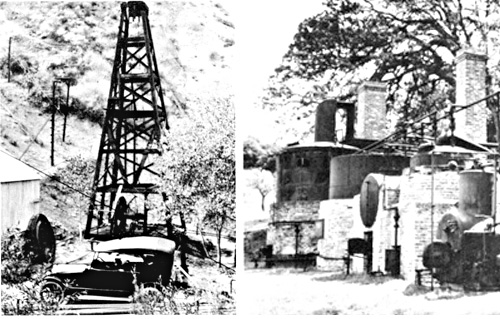History of Local Oil Development
Oil has been known in Ventura County since before the arrival of the Europeans, as the native Chumash people used tar from natural seeps as a sealant and waterproofing for baskets and canoes.
In the 1860s, several attempts were made to harvest the petroleum products under Ventura County but none were financially successful, and the oil speculators eventually changed from oil to land development. In 1913, oil exploration began in earnest, with Ralph Lloyd obtaining the financial support of veteran oilman Joseph B. Dabney. Their first well, named “Lloyd No. 1”, was started on January 20, 1914. The well-struck oil at 2558 feet (780 m) but was destroyed when it went wild.
Other wells met a similar fate, until 1916, when a deal was struck with the Shell Oil Company. 1916 was the year the large South Mountain Oil Field was discovered, and other deals followed with General Petroleum in 1917 and Associated Oil Company in 1920.
At its peak, the largest oil field in the county, the Ventura Avenue oilfield, discovered in 1919 in the hills north of Ventura, was producing 90,000 barrels (14,000 m3) of oil a day, with annual production of over a million and a half barrels. More oil fields came online in the 1920s and 1930s, with the Rincon field, the second-largest, in 1927, and the adjacent San Miguelito in 1931.


